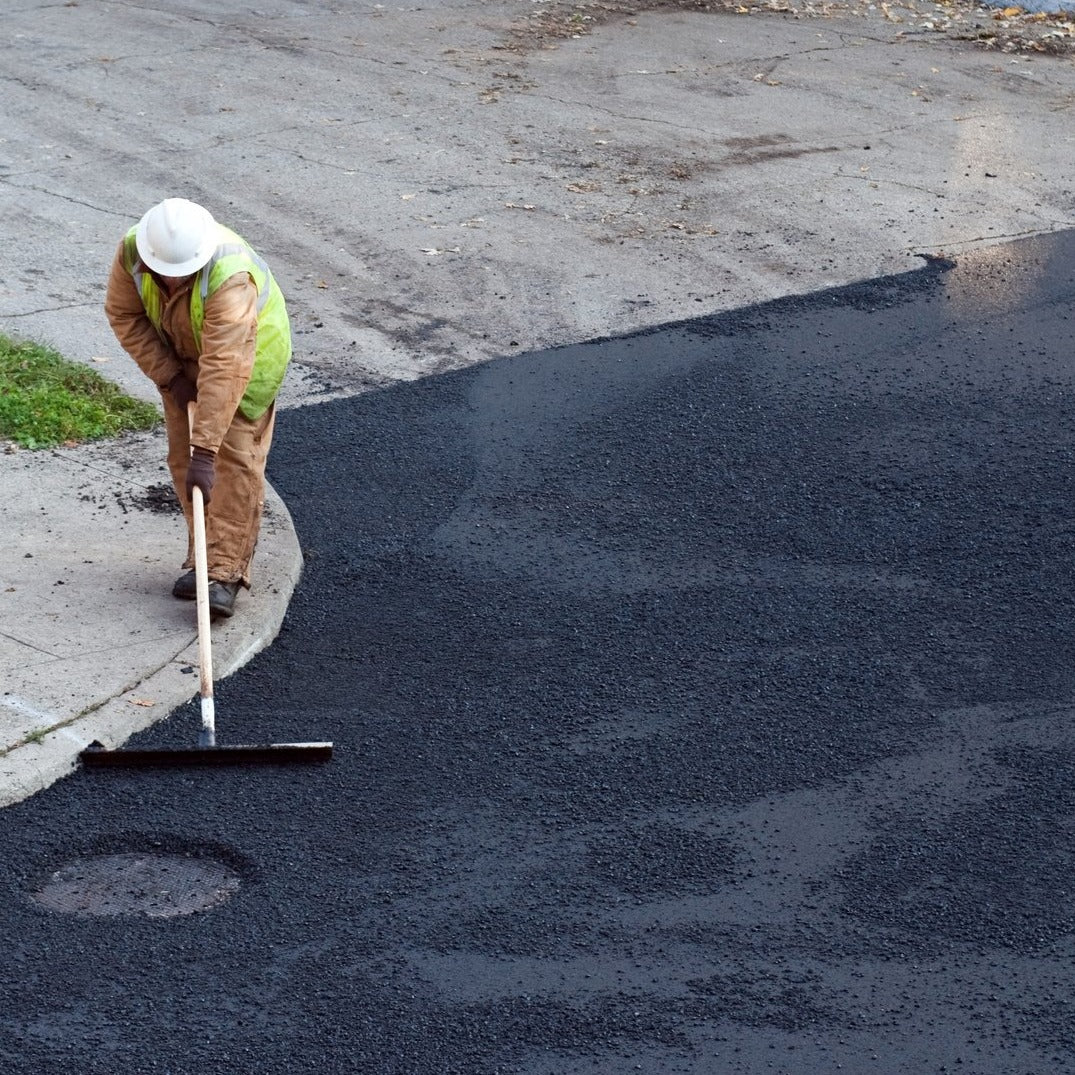Reimagine Your Space: Hot Mix Asphalt Paving for Angled Parking Lot Jobs
Unlocking the Tricks of Warm Mix Asphalt Modern Technology
Discovering the midsts of warm mix asphalt innovation discovers a world where exact formulations and meticulous procedures merge to form our roadways and facilities. The combination of binders, aggregates, and fillers isn't just a construction job yet a critical orchestration of durability and efficiency. As we peer right into the detailed dancing of elements, a tapestry of resilience and sustainability unfolds. Yet what exists underneath this surface of asphaltic mastery, and what secrets wait to be introduced in the world of paving developments?
Relevance of Hot Mix Asphalt
Warm Mix Asphalt plays a vital role in modern-day facilities development as a result of its sturdiness and cost-effectiveness. As one of the most frequently utilized leading material for roadways, highways, and parking lots, Warm Mix Asphalt offers a variety of benefits that add to its significance in building and construction jobs. One crucial advantage is its capacity to endure hefty traffic tons and harsh weather condition problems, offering a trusted and lasting surface area for transport networks. Additionally, Hot Mix Asphalt is cost-effective in both preliminary building and construction and lasting maintenance, making it a preferred option for several infrastructure projects.
The longevity of Warm Mix Asphalt stems from its composition, which consists of accumulations, binder, and filler materials that are very carefully chosen and mixed to fulfill particular performance needs. In general, the importance of Warm Mix Asphalt in infrastructure growth can not be downplayed, as it continues to be a keystone of modern building and construction methods.
Components of Asphalt Mixes
The make-up of asphalt mixes is composed of thoroughly picked aggregates, binder, and filler products that are important for attaining certain performance demands. Accumulations are the main part of asphalt mixes, giving stamina and security. These aggregates can be all-natural, such as gravel or smashed stone, or artificial, like recycled materials from old sidewalks. The binder, usually bitumen or asphalt concrete, holds the accumulations together and supplies flexibility and durability to the mix. The option of the binder is important as it directly affects the mix's performance in various weather. Fillers, such as hydrated lime or Rose city concrete, are used to enhance the mix's workability and aging resistance. Angled Parking.
The mix and percentage of these parts play a significant role in identifying the high quality and efficiency of the asphalt mix. Designers very carefully make the mix to fulfill details requirements, considering factors like traffic volume, climate problems, and sidewalk life-span. Correct option and harmonizing of accumulations, binder, and fillers are necessary for developing long lasting, resilient asphalt sidewalks.
Mixing and Production Techniques

As soon as the accumulations are picked, the binder, often asphalt cement, is included in bind the materials together. The binder's quality and quantity considerably affect the mix's versatility, resistance, and stamina to environmental factors. Additionally, fillers like hydrated lime or Rose city concrete may be integrated to enhance particular qualities of the asphalt mix, such as its workability or moisture resistance.
Throughout manufacturing, the accumulations and binder are heated up, usually between 250-325 ° F(121-163 ° C ), to facilitate blending and make certain correct finish of the accumulations. The mixing procedure has to be complete to accomplish a homogeneous mixture that advertises the preferred performance qualities of the asphalt. Numerous strategies, such as batch mixing or drum blending, are utilized to achieve top notch and regular asphalt mixes for construction tasks.
Aspects Affecting Asphalt Efficiency
Aspects influencing asphalt efficiency include an array of variables that affect the longevity, long life, and total top quality of asphalt sidewalks. One essential element is the quality of materials made use of in the asphalt mix.

Style factors to consider, such as sidewalk thickness and drainage, are necessary in ensuring the long-term performance of the asphalt sidewalk. By very carefully taking into consideration these specialists, aspects and designers can enhance asphalt efficiency and improve the service life of pavements.
Sustainable Practices in Asphalt Innovation

Furthermore, the advancement of warm-mix asphalt (WMA) innovations has gained grip in the last few years. WMA permits the production and More Bonuses placement of asphalt blends at reduced temperatures compared to typical hot-mix asphalt, causing decreased energy consumption and greenhouse gas exhausts. The usage of porous asphalt blends can assist mitigate stormwater drainage problems by allowing water to penetrate with the sidewalk and into the ground, advertising natural water filtration and charge processes. By applying these sustainable techniques, the asphalt market can add to developing a more ecologically friendly and durable facilities network.
Verdict
Finally, warm mix asphalt technology plays a vital duty in modern facilities growth as a result of its durability and cost-effectiveness. By very carefully stabilizing parts, using correct blending strategies, and considering different aspects, designers can develop high-grade asphalt blends that endure rush hour tons and severe weather condition problems. Welcoming lasting techniques, such as making use of warm-mix technologies and recycled materials, further enhances the ecological kindness of asphalt modern technology.
Blending and manufacturing methods in hot mix asphalt technology involve the precise combination and handling of accumulations, binder, and fillers to develop a high-performance and sturdy asphalt mix.Variables affecting asphalt efficiency incorporate a variety of variables that affect the sturdiness, longevity, and overall top quality click for info of asphalt sidewalks. Lasting methods in asphalt innovation encompass various initiatives intended at decreasing the environmental influence of asphalt manufacturing and paving procedures. By incorporating reclaimed asphalt sidewalk (RAP) and recycled asphalt roof shingles (RAS) into new asphalt blends, the sector can substantially decrease the intake of raw products and energy, while also lowering garbage dump waste.
WMA allows for the manufacturing and placement of asphalt blends at lower temperature levels compared to standard hot-mix asphalt, resulting in decreased power consumption and greenhouse gas exhausts.